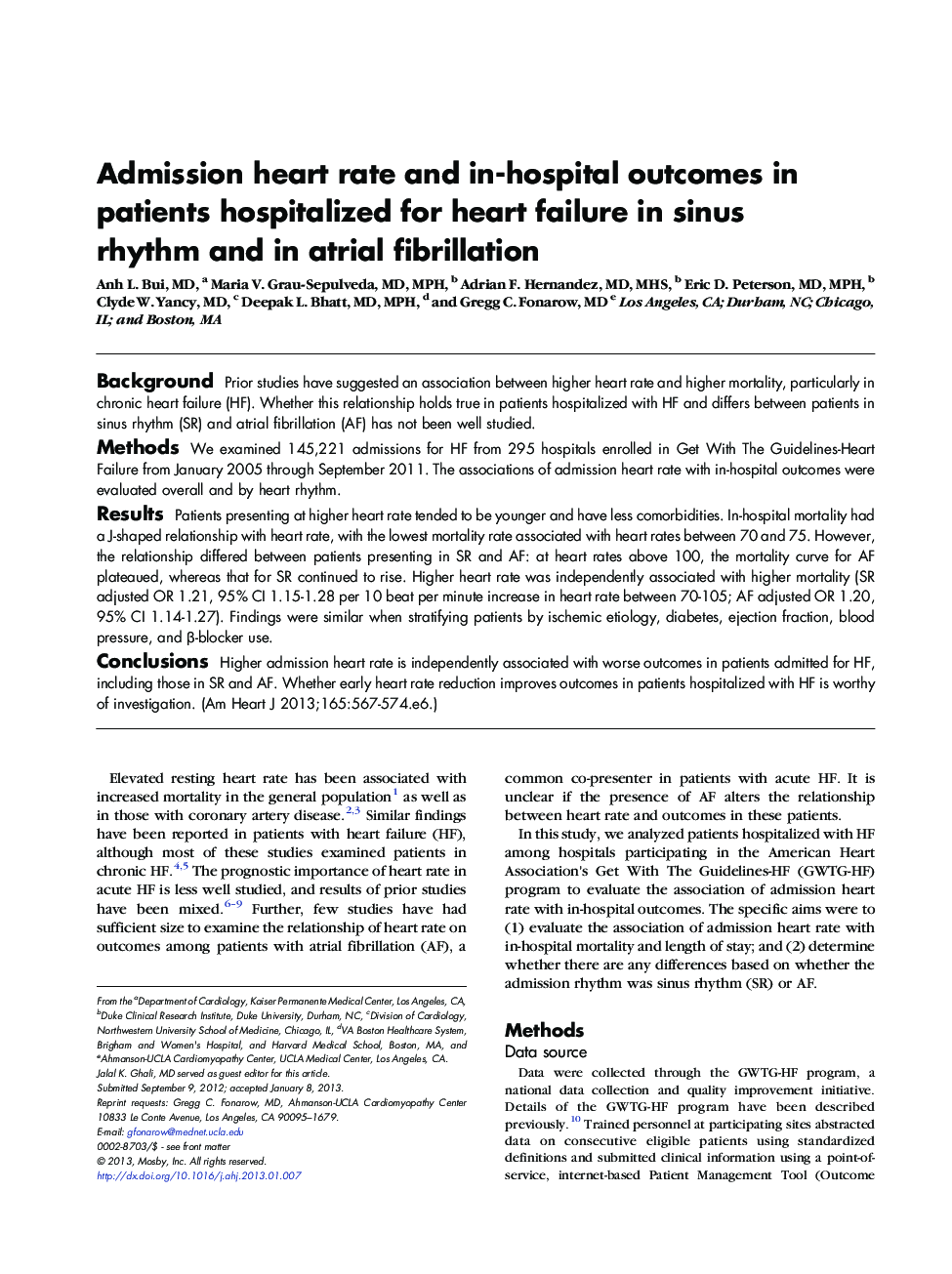| Article ID | Journal | Published Year | Pages | File Type |
|---|---|---|---|---|
| 5928857 | American Heart Journal | 2013 | 14 Pages |
BackgroundPrior studies have suggested an association between higher heart rate and higher mortality, particularly in chronic heart failure (HF). Whether this relationship holds true in patients hospitalized with HF and differs between patients in sinus rhythm (SR) and atrial fibrillation (AF) has not been well studied.MethodsWe examined 145,221 admissions for HF from 295 hospitals enrolled in Get With The Guidelines-Heart Failure from January 2005 through September 2011. The associations of admission heart rate with in-hospital outcomes were evaluated overall and by heart rhythm.ResultsPatients presenting at higher heart rate tended to be younger and have less comorbidities. In-hospital mortality had a J-shaped relationship with heart rate, with the lowest mortality rate associated with heart rates between 70 and 75. However, the relationship differed between patients presenting in SR and AF: at heart rates above 100, the mortality curve for AF plateaued, whereas that for SR continued to rise. Higher heart rate was independently associated with higher mortality (SR adjusted OR 1.21, 95% CI 1.15-1.28 per 10 beat per minute increase in heart rate between 70-105; AF adjusted OR 1.20, 95% CI 1.14-1.27). Findings were similar when stratifying patients by ischemic etiology, diabetes, ejection fraction, blood pressure, and β-blocker use.ConclusionsHigher admission heart rate is independently associated with worse outcomes in patients admitted for HF, including those in SR and AF. Whether early heart rate reduction improves outcomes in patients hospitalized with HF is worthy of investigation.
